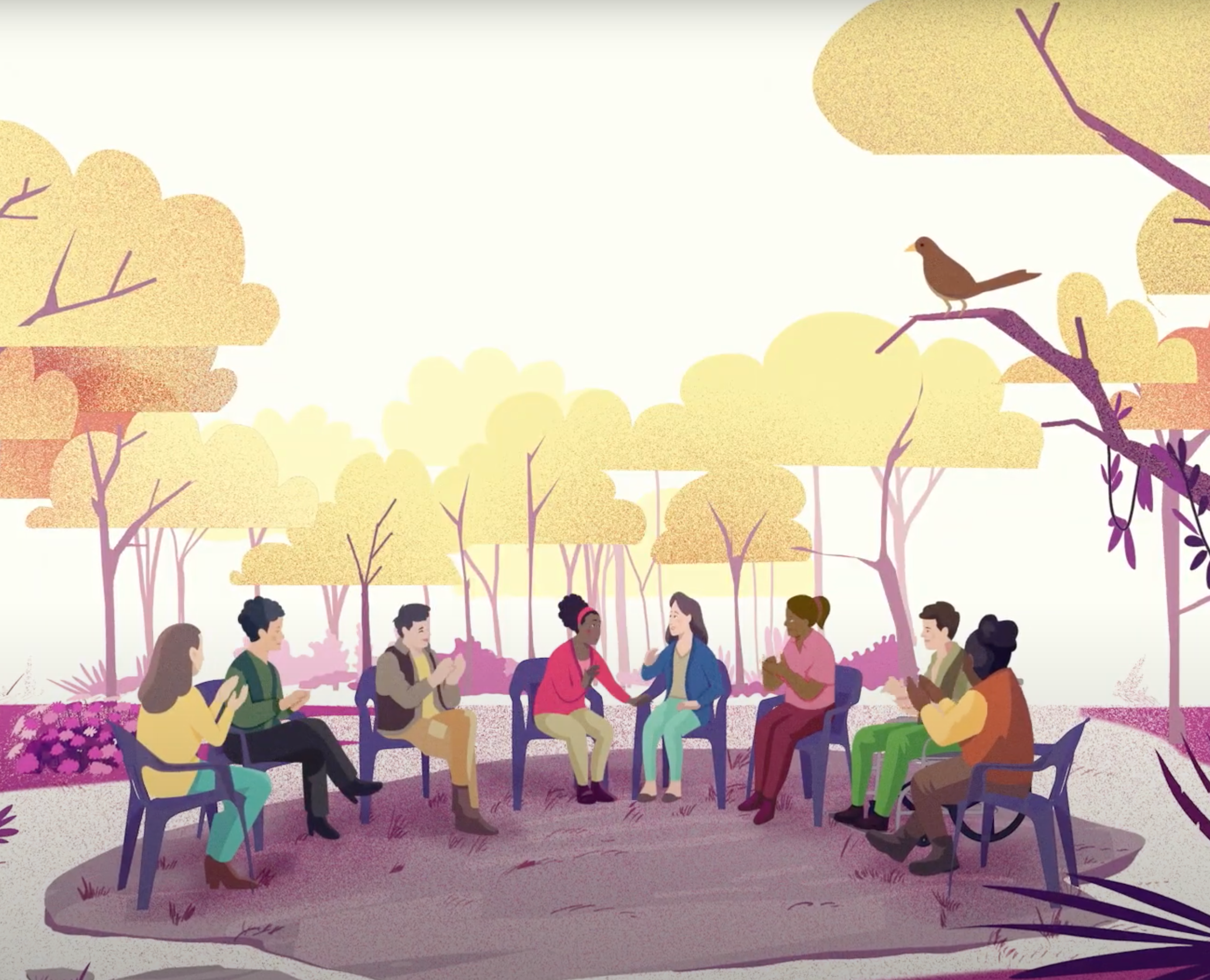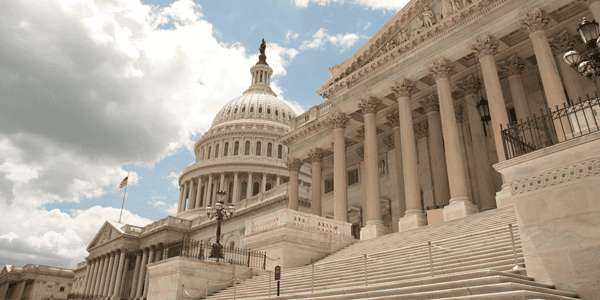Cancer Disparities ACS Research Highlights
The American Cancer Society (ACS) believes everyone should have a fair and just opportunity to prevent, find, treat, and survive cancer. That belief guides the ACS to conduct and support research to help understand cancer inequalities and create strategies for overcoming them.
Why ACS Is Committed to Improving Health Equity
To learn more about the American Cancer Society's (ACS) focus on ending health disparities, see:
Understanding Cancer Disparities
Cancer is a disease that can affect anyone, but it doesn’t affect everyone equally.
Many social structures and practices can limit a person’s access to health care they need to prevent, treat, and survive cancer. These obstacles may include racism, discrimination, poverty, lack of access to healthy and affordable foods, low quality education and housing, and jobs with inadequate pay.
A health disparity is when the quality of health care differs between people because of discrimination based on:
- Age
- Disability status
- Health insurance coverage
- Gender identity
- Geography (where a person lives)
- Income
- Race or ethnicity (racism)
Health care disparities can affect every step of cancer care — from prevention and screening to the quality of life after cancer treatment, which means disparities in care can affect who develops and dies from cancer.
New Training Center Paves the Way to a Future with More Diverse Cancer Researchers
Last summer, ACS funded the first Diversity in Cancer Research (DICR) Internship program at 8 universities.
This 10-week summer cancer research experience aims to increase diversity and inclusion in the cancer workforce for under-represented minorities who are rising college sophomores, juniors, and seniors with an interest in any STEM (science, technology, engineering, and mathematics) discipline.
This year, we expanded to a Center for Diversity in Cancer Research (DICR) Training. Now, in addition to the college internship program, there are also training programs for high school students and for college graduates who plan to earn a doctorate degree.
Spotlight on ACS Research Publications
The ACS employs full-time researchers and funds scientists across the United States who relentlessly search for answers to help us better understand cancer, including cancer health disparities. Here are some highlights of their work.
ACS Cancer Prevention Studies
The ACS Population Science department includes scientists who work with our large, on-going cancer prevention studies (CPS), such as CPS-II and CPS-3. Many of these studies include analyses about disparities. Here's a sample of their work.

CPS-II and CPS-3 Participants Allow for Ongoing Disparities Studies About Cancer Risk & Survival
Epidemiology researchers in the ACS Population Science department continually analyze data from the Cancer Prevention Study II (CPS-II) and CPS-3 to better understand factors that contribute to disparities.
Currently, we’re looking at how:
- Living in a rural community affects the social determinants of healthy eating and active living. And how together these factors contribute to the risk of developing or dying from cancer.
- The COVID-19 pandemic has affected diet quality, physical activity, mental health, and cancer screening practices in different populations. Over time, our epidemiologists will be able to examine ongoing health effects related to COVID-19 in the general population as well as in cancer survivors.
- Using technology to distribute evidence-based behavior-change interventions to medically underserved populations. These include programs such how to stop smoking and and how to increase physical activity. Their participation can help reduce the risk for developing cancer and improve survival if they develop it.
We’re also adding new questions to the 2021 survey that will help us understand perceived discrimination and its impact on health by asking participants where, why, and when they have felt discrimination.
Exercise & Sitting Time Vary by Race & Birthplace
A CPS-3 Study
Erika Rees-Punia, PhD, MPH
Principal Scientist,
ACS Epidemiology & Behavioral Research,
Population Science
“With CPS-3, we allow participants to select from more specific racial/ethnic groups than just Black, White, and Other. By doing so, we found some disparities in physical activity related to participants’ race and birthplace. Other scientists can use our results to identify demographic groups for future research to explore group-specific barriers and facilitators of physical activity and to create culturally tailored messaging, programs, and policy work.”
Cancer Disparities Statistics in Brief
Highlights: Cancer Facts & Figures for African American/Black People, 2022-2024
Every 3 years, the American Cancer Society (ACS) publishes the report Cancer Facts & Figures for African American/Black People and its accompanying scientific paper in the ACS peer-reviewed journal, CA: A Cancer Journal for Clinicians.
These publications provide the most recent data on cancer newly diagnosed cases (incidence), mortality, survival, screening, and risk factors for Black people in the United States.
For most types of cancers, Black people have the highest death rate and shortest survival rate of any racial/ethnic group. This is due to disproportionate numbers of Black people living below the national poverty level and underlying systemic discrimination that reduce access to cancer screening, which is care that allows for early detection, and appropriate, high-quality treatment. In 2022, there will be an estimated 224,080 new cancer cases and 73,680 cancer deaths among Black people.
Facts about Black Women & Cancer
- Black women have 8% lower incidence but 12% higher mortality than White women.
- Black women have 41% higher breast cancer mortality than White women despite lower breast cancer incidence.
- Black women are less likely than White women to be diagnosed with localized-stage breast cancer (57% versus 67%) and lower survival for every stage of disease (e.g., 20% vs 30% for distant stage).
- Breast cancer surpassed lung cancer in 2019 to become the leading cause of cancer death among Black women, whereas lung cancer continues to be the leading cause of cancer death among Black men.
Facts about Black Men & Cancer
- Black men have 6% higher cancer incidence than White men but 19% higher cancer mortality.
- Black men are 73% more likely than White men to be diagnosed with prostate cancer and more than twice as likely to die from the disease.
Highlights: Cancer Facts & Figures for Hispanic/Latino People, 2021-2023
For Spanish-speaking readers >>Datos y Estadísticas sobre el Cáncer entre los Hispanos/Latinos
Every 3 years, Kimberly Miller, MPH, a research scientist at the American Cancer Society (ACS), publishes the report Cancer Facts & Figures for Hispanics/Latinos (Spanish edition available Winter 2021) and also is the lead author for a scientific paper published in the ACS peer-reviewed journal, CA: A Cancer Journal for Clinicians.
These publications provide updated cancer information on cancer occurrence and risk factors in the Hispanic/Latino population, as well as information about prevention, early detection, and treatment.
For Hispanic people, compared to non-Hispanic White people:
- Poverty rates in 2019 were more than double—16% compared to 7%. Socioeconomic disparities among Hispanic people are strongly linked to long-standing systemic racism, which prevents Hispanic people from receiving equitable access to high quality cancer care for prevention, early detection, and treatment.
- The percentage of people without health insurance was nearly triple—26% compared to 9% among ages 18 to 64 years during 2017 to 2018. In fact, the Hispanic/Latino population has the highest percentage of people without health insurance of any major racial/ethnic group in the US.
- Incidence rates were lower for the four most common cancers (female breast, colorectal, lung, and prostate). This reflects the lower risk for these cancers among foreign-born people, who account for about a third of the Hispanic population. However, as population growth is now driven by births, not immigration, the cancer burden in Hispanic people is expected to increase.
- Incidence rates were higher for infection-related cancers—stomach, liver, and cervical—as well as for gallbladder cancer. Differences in cervical cancer are largely due to less access to HPV screening and higher prevalence of HPV infection.
- Disparities in 5-year survival rates were largest for melanoma. About 91% of Whites live at least 5 years after being diagnosed with melanoma, compared to only 78% of Hispanics.
Hispanic/Latino people born in the US may have cancer incidence rates more like non-Hispanic white people—or even higher. This is partly due to US acculturation—the adoption of attitudes, values, customs, beliefs, and behaviors of people in the US. When combined with socioeconomic disparities and systemic racism, acculturation leads to a higher burden of cancer risk factors, such as obesity and type 2 diabetes in US-born Hispanic people.
Certain Hispanic/Latino subpopulations have substantially varying cancer rates and risk factors. For example, lung cancer incidence rates are higher in Cuban men than in other Hispanic groups combined due to higher historical smoking rates.
Hispanic/Latino children and adolescents have higher rates of leukemia than all other racial and ethnic groups in the US. They have nearly double the rate in Black children, who experience the lowest rates.
Advocating for Cancer Equity
Disparities Research Informs Advocacy and Policy Actions
The American Cancer Society Cancer Action Network (ACS CAN) is the nonprofit, nonpartisan advocacy affiliate of the American Cancer Society. Its role is to support evidence-based policy and legislative solutions designed to eliminate cancer as a major health problem. American Cancer Society (ACS) researchers collaborate with ACS CAN staff to explore how and why certain groups of people in the US are not benefitting from health care services such as cancer prevention, early detection, and treatment.
ACS CAN is attacking disparities by changing or adding new evidence-based public health policies at the local, state, and federal levels. The goal of ACS CAN is to reduce these disparities and improve health outcomes for all US population groups regardless of race, ethnicity, gender, age, sexual orientation, socioeconomic status, or zip code.
For more information, visit the ACSCAN web site at www.fightcancer.org
REDUCING BARRIERS
Patient Enrollment in Cancer Clinical Trials
And we actually got legislation passed in three states—Colorado, Minnesota, and Illinois—which would require their state Medicaid plans to cover those routine care costs of cancer clinical trials."
Health Equity at ACS
We’re Learning How to Better Integrate Health Equity into Our Organizational Practices and Culture
American Cancer Society (ACS) researchers and the researchers we fund through extramural grants are working to better understand what health disparities exist, what causes them, and how to decrease them.
Our research shows that while overall cancer mortality rates are dropping, populations who are marginalized are bearing a disproportionate burden of preventable death and disease. If we are to further reduce deaths from cancer, we need to make sure everyone has the ability to benefit from the advances in the prevention and treatment of cancer.
A partnership and 3-year grant (2021 to 2023) with the Robert Wood Johnson Foundation (RWJF) is helping us do just that. RWJF is the nation's largest philanthropic organization dedicated solely to health in the United States. They’re committed to working with others to build a “Culture of Health” that provides everyone with a fair and just opportunity to be as healthy as possible.
The purpose of RWJF’s partnership with ACS and our nonprofit, nonpartisan affiliate, the American Cancer Society Cancer Action Network (ACS CAN) is to advance the culture of health equity, integrate it into our organization, and make it a shared value for ACS and ACS CAN volunteers, staff, partners, and the community at the national, state, and local levels. We are doing this through trainings and other educational opportunities for volunteers and staff to deepen their health equity knowledge and skills.
We are also piloting Health Equity Community Projects, a collaboration between ACS, ACS CAN, and community partners in select cohorts across the nation. The goal of this partnership is to explore, identify, and implement community-driven solutions that address specific social and structural factors around cancer disparities.
More About Our Cancer Health Disparities Work
From advocating for change to fundraising for research, we’re working hard to address cancer health disparities.










